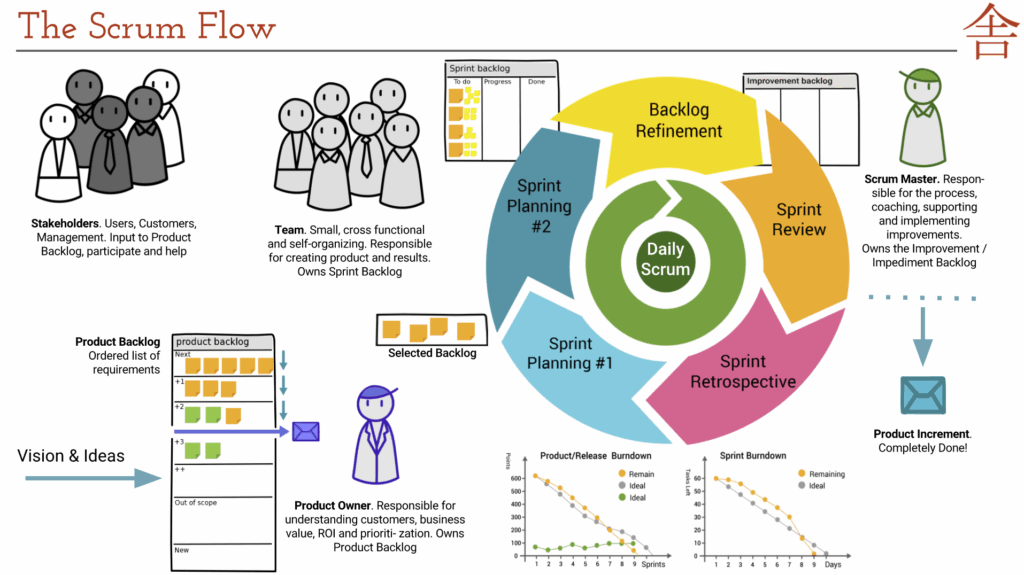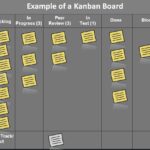Remember those days when projects felt like a tangled ball of yarn? Deadlines loomed, priorities shifted like desert sands, and every meeting felt like a broken record. That was me, not so long ago. I was caught in the whirlwind of traditional project management, constantly chasing my tail, and frankly, feeling pretty burnt out. My team was great, but we were all stuck in a cycle of stress, rework, and the dreaded "scope creep." We were working hard, but it often felt like we weren’t really moving forward.
The Moment I Knew Something Had to Change
I remember one particular project that just wouldn’t get off the ground. We had a detailed plan, a massive Gantt chart, and endless status reports. Yet, every week brought new challenges, unexpected roadblocks, and a growing sense of frustration. Communication was clunky, decisions were slow, and our clients were getting impatient. I’d sit at my desk, staring at my screen, thinking, "There has to be a better way to do this. A smarter, less stressful way."
It was around that time I started hearing whispers about "Agile" and "Scrum." Honestly, at first, it sounded like another batch of corporate buzzwords. But the people talking about it seemed… calmer. Happier, even. They spoke of flexibility, collaboration, and delivering value faster. Intrigued, and frankly, a little desperate, I decided to look into it. That’s when I discovered the world of Scrum courses.
Stepping into the World of Scrum Training: My First Scrum Course
Signing up for a Scrum Course felt like a leap of faith. I wasn’t sure what to expect. Would it be dry lectures? More jargon? To my pleasant surprise, it was anything but. The instructor wasn’t just reciting definitions; they were a storyteller, sharing real-world examples and encouraging open discussion. The room was full of people from diverse backgrounds – developers, marketing specialists, team leads, even folks from HR – all grappling with similar project headaches. It immediately felt like a supportive environment.
We didn’t just listen; we did. We worked in small groups, tackling mock projects, making decisions, and even failing (safely, of course!). This hands-on approach was a game-changer. It wasn’t about memorizing terms; it was about understanding a different mindset, a new way of approaching work that prioritizes people, collaboration, and adaptability over rigid plans. I began to see how Scrum wasn’t just a set of rules, but a philosophy.
What I Actually Learned (It’s Not Just Buzzwords!)
The core of Scrum, I learned, is beautifully simple yet incredibly powerful. It’s about breaking down big, overwhelming projects into small, manageable chunks and constantly checking in, adapting, and improving. Here are some of the key takeaways that truly resonated with me:
Sprints: Small Bites, Big Progress
Forget those months-long project phases. Scrum introduces "Sprints" – short, time-boxed periods (usually 1-4 weeks) where a team focuses on delivering a specific set of work. This was revolutionary for me. Instead of looking at a mountain of tasks, we could focus on a small hill, conquer it, and then move to the next. It made everything feel less daunting and more achievable.
The Daily Scrum: Connecting, Not Reporting
Remember those long, tedious status meetings? The Daily Scrum is the antidote. It’s a quick, 15-minute stand-up meeting where the team syncs up. Not to report to a boss, but to talk to each other: "What did I do yesterday that helped the Sprint goal?" "What will I do today to help the Sprint goal?" "Are there any obstacles in my way?" It’s about collaboration and problem-solving, not just ticking boxes.
The Product Backlog & Sprint Backlog: Clear Priorities
Before, our "to-do" list was a chaotic mess. With Scrum, we learned about the Product Backlog – a prioritized list of all the features and improvements needed for the product. Then, for each Sprint, the team pulls a subset of these items into the Sprint Backlog. This brought incredible clarity. Everyone knew exactly what we were working on and, more importantly, why it mattered.
Sprint Review & Retrospective: Learn and Adapt
These two events are where the real magic happens. The Sprint Review is a chance to show what the team accomplished during the Sprint to stakeholders and get their feedback. It’s not a big reveal at the end; it’s a regular check-in. And the Sprint Retrospective? That’s the team’s dedicated time to reflect on how they worked. "What went well?" "What could be improved?" "What will we commit to trying differently next Sprint?" This continuous improvement loop is what makes Scrum so powerful and truly helps teams grow.
The Scrum Roles: Not Just Titles, but Responsibilities
The course also clarified the specific roles:
- Product Owner: The voice of the customer, responsible for maximizing the value of the product and managing the Product Backlog.
- Scrum Master: A servant leader who helps the team understand Scrum, removes impediments, and fosters a collaborative environment.
- Development Team: The self-organizing group of professionals who do the work of delivering a potentially releasable Increment of "Done" product at the end of each Sprint.
These aren’t just job titles; they are distinct responsibilities that empower the team and streamline the process.
My Team’s Transformation: Life After the Scrum Course
Armed with this new knowledge, I brought Scrum back to my team. It wasn’t an overnight switch; there were bumps and learning curves, as with any new approach. But slowly, steadily, things began to change.
Our daily stand-ups became genuinely productive. Our Sprints, though sometimes challenging, felt like focused bursts of energy. We started delivering working pieces of our product much faster, getting real feedback, and making adjustments before problems became massive. The communication improved dramatically, and the constant feeling of being overwhelmed started to dissipate. My team, once stressed, began to feel more engaged, more collaborative, and genuinely proud of their frequent accomplishments. Projects started to feel less like a battle and more like a well-coordinated journey.
Is a Scrum Course Right for You? My Honest Opinion.
If any part of my "before" story sounds familiar, then yes, a Scrum Course is absolutely worth considering. It’s not just for software developers; it’s for anyone involved in projects, product development, or team management. I’ve seen marketing teams, content creators, and even event planners benefit immensely from applying Scrum principles.
What to look for in a good Scrum Course:
- Experienced Instructors: Someone who has lived and breathed Scrum, not just read a textbook.
- Interactive Learning: Hands-on exercises, group discussions, and simulations are key.
- Practical Application: Focus on how to actually implement Scrum, not just theoretical concepts.
- Certification Options: While not always necessary, a recognized certification (like Scrum Master or Product Owner) can validate your knowledge and boost your career.
A Scrum Course isn’t just about getting a certificate; it’s about shifting your perspective on how work gets done. It’s about learning to embrace change, foster true collaboration, and deliver value consistently. It gave me, and my team, a roadmap out of project chaos and into a clearer, more effective way of working. And honestly, it made work a lot more enjoyable. If you’re looking to transform your project management, improve team dynamics, and find a more agile way forward, diving into a Scrum Course might just be the best decision you make.



